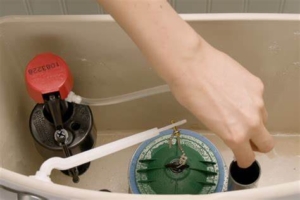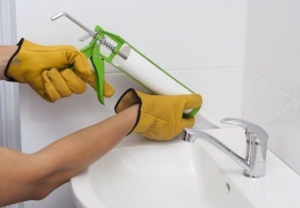My Door Won’t Latch? Common
Causes and Troubleshooting Steps
A door that won’t latch is a common problem in many homes. It’s frustrating when a door refuses to close properly. It may seem like a small issue, but it can cause a lot of inconveniences. This issue can be due to various reasons such as a misaligned latch, a warped door, or maybe the strike plate is not in the correct position. This guide will help you understand why your door won’t latch and provide easy solutions to fix it. Don’t worry; most of these fixes are simple and won’t require calling a professional. Let’s dive deeper and find the best solution for your door-latching problem.
Reasons why a door won’t latch
Misalignment of the door and frame
Doors that don’t latch properly can often be attributed to a misalignment between the door and its frame. This misalignment can occur due to various factors, such as settling of the building, changes in temperature and humidity, or improper installation. When the door and frame are not aligned correctly, it can prevent the latch from engaging fully with the strike plate, leading to the door not latching properly.
Damaged or worn latch mechanism
Another common reason for a door failing to latch is a damaged or worn latch mechanism. Over time, the latch can become worn out or damaged due to frequent use or improper maintenance. This can result in the latch not extending fully or retracting properly, making it difficult for the door to latch securely.
Loose or worn out door hinges
Door hinges play a vital role in ensuring that the door functions properly. If the door hinges are loose or worn out, they can cause the door to sag or shift from its original position. This misalignment can prevent the latch from properly aligning with the strike plate, causing the door to not latch correctly. Regular inspection and maintenance of door hinges can help prevent this issue.
Warped door or frame
Wooden doors and frames are susceptible to warping due to changes in temperature and humidity. When a door or frame warps, it can result in an uneven surface, making it challenging for the latch to engage with the strike plate. This can cause the door to fail to latch properly. In such cases, addressing the underlying cause of the warping and potentially repairing or replacing the door or frame may be necessary.
Obstruction in the door latch
Sometimes, an obstruction within the door latch itself can prevent it from engaging properly with the strike plate. Dust, debris, or even a small foreign object can hinder the latch’s movement, causing it to fail in latching the door securely. Regular cleaning and maintenance of the door latch can help prevent this issue.
Weather-related issues affecting the door
Extreme weather conditions, such as heavy rain, snow, or prolonged exposure to sunlight, can affect the functionality of doors. Moisture can cause wooden doors to swell, making it difficult for the latch to engage properly. Similarly, prolonged exposure to sunlight can cause doors to shrink or warp. Addressing any weather-related issues, such as sealing or weatherstripping, can help alleviate these problems and ensure proper latching.
Faulty strike plate
The strike plate is the metal plate attached to the door frame, which the latch engages with when the door is closed. If the strike plate is damaged, misaligned, or improperly installed, it can prevent the latch from engaging securely. This can lead to a door that won’t latch properly. Ensuring that the strike plate is in good condition and properly aligned with the latch can help resolve this issue.
Issues with the door handle or knob
Sometimes, the problem lies not with the latch itself, but with the door handle or knob. Loose or worn-out handles or knobs can prevent the latch from engaging fully with the strike plate, resulting in a door that won’t latch properly. Regular maintenance and replacement of door handles or knobs as needed can help avoid this issue.
Troubleshooting Steps for a Door That Won’t Latch
If you find yourself struggling with a door that won’t latch properly, don’t worry! There are several troubleshooting steps you can take to fix the issue and ensure your door functions smoothly.
There could be a variety of common causes. Here are some troubleshooting steps and the tools you might need for each scenario:
1. Misaligned Door:
- Tools: Screwdriver, level, shims (if needed)
Troubleshooting Steps:
- Check if the door is hanging straight. If not, it might be misaligned.
- Use a level to determine if the door is plumb vertically and level horizontally.
- Loosen the hinge screws slightly and adjust the door’s position. Insert shims if necessary to level and align the door properly.
- Tighten the hinge screws once the door is aligned correctly.
2. Misaligned Latch Plate:
- Tools: Screwdriver, chisel, hammer
Troubleshooting Steps:
- Examine the latch plate (strike plate) on the door frame. It might be misaligned with the latch on the door.
- Loosen the screws on the latch plate.
- If the latch hole is misaligned, use a chisel to carefully enlarge or adjust the hole so that the latch can catch properly.
- Tighten the screws on the latch plate once it’s aligned.
3. Worn Latch or Strike Plate:
- Tools: Screwdriver, replacement latch or strike plate
Troubleshooting Steps:
- Inspect the latch on the door and the latch plate on the frame for signs of wear or damage.
- If either the latch or the strike plate is worn or damaged, replace it with a new one of the same size and type.
4. Tight Door Fit:
- Tools: Plane, sandpaper
Troubleshooting Steps:
- If the door is too tight against the frame, it might not latch properly.
- Remove the door from its hinges if necessary.
- Use a plane or sandpaper to carefully shave a small amount from the edge of the door where it’s sticking. Make sure to sand evenly to maintain the door’s appearance.
5. Spring-Loaded Latch Issues:
- Tools: Screwdriver, lubricant (silicone spray or graphite)
Troubleshooting Steps:
- If the latch mechanism is spring-loaded and seems stuck, it might need lubrication.
- Remove the latch assembly carefully, if possible.
- Apply a small amount of silicone spray or graphite lubricant to the moving parts of the latch mechanism.
- Reassemble the latch and test its operation.
6. Loose Door Hardware:
- Tools: Screwdriver
Troubleshooting Steps:
- Check all screws and hardware on the door and frame for tightness.
- Tighten any loose screws, especially those on hinges, handles, and latch components.
Preventive Measures to Avoid Latch Problems
Regular maintenance and preventive measures can go a long way in ensuring that your door latch functions smoothly and avoids any potential problems. By taking a few simple steps, you can keep your door latch in good shape and avoid inconvenient issues down the line.
Regularly Inspect and Maintain Door Hinges
One of the primary causes of latch problems is faulty or worn-out door hinges. Over time, hinges can become loose or corroded, affecting the alignment of the door and preventing the latch from properly engaging. To prevent this, it is essential to regularly inspect and maintain your door hinges.
Check for any signs of rust or damage on the hinges, and tighten any loose screws. If you notice excessive wear or damage, consider replacing the hinges altogether. By keeping your hinges in good condition, you ensure that the door operates smoothly, allowing the latch to function properly.
Keep the Door and Frame Properly Aligned
Proper alignment of the door and frame is crucial for the latch to engage correctly. Over time, due to settlement or usage, doors can become misaligned, causing the latch to miss the strike plate. To avoid this issue, it is important to keep the door and frame properly aligned.
Check the alignment by closing the door and observing if the latch aligns seamlessly with the strike plate. If the latch consistently misses the strike plate, adjustments may be necessary. You can use shims or adjust the hinges to ensure the door aligns properly and the latch engages smoothly.
Lubricate Latch Mechanism Periodically
To maintain the functionality of your door latch, periodic lubrication is essential. Over time, dirt, dust, and debris can accumulate within the latch mechanism, hindering its smooth operation. By applying a lubricant such as silicone spray or graphite powder, you can prevent the latch from sticking or becoming stiff.
Ensure that you clean the latch mechanism thoroughly before applying any lubricant. Apply a small amount of lubricant to the moving parts of the latch, including the bolt and the latch plate. Be cautious not to over-lubricate, as excessive lubrication can attract more dirt and debris, causing further problems.
Install a Door Sweep or Weatherstripping
Weather-related issues can greatly affect the functionality of your door latch. Rain, wind, and extreme temperatures can cause the door to expand or contract, leading to misalignment and latch problems. To mitigate these issues, consider installing a door sweep or weatherstripping.
A door sweep or weatherstripping acts as a barrier, sealing the gap between the bottom of the door and the threshold. This helps to prevent drafts, moisture, and debris from entering your home, ultimately protecting your latch mechanism. By minimizing the impact of weather-related factors, you can prolong the life of your latch and ensure its smooth operation.
Use the Door Handle or Knob with Care
Lastly, it’s important to handle your door with care to avoid damaging the latch. Excessive force or rough handling can cause strain on the latch mechanism, leading to premature wear and potential latch problems.
Always use the door handle or knob gently and avoid slamming the door shut. Teach everyone in your household to treat the door with care, ensuring that the latch stays in good condition for an extended period.
Conclusion
If you find that your door won’t latch properly, it is essential to address this issue promptly to ensure the safety and functionality of your home. By following the steps mentioned earlier in this blog post, such as checking for any obstructions, adjusting the strike plate, and tightening loose screws, you can often resolve the problem on your own. However, if the issue persists or if you are unsure about how to proceed, it is always a good idea to seek the assistance of a professional locksmith or handyman. Remember, a well-latched door not only provides security but also enhances the overall aesthetic appeal of your living space. Don’t overlook this seemingly minor problem, as it can have a significant impact on the comfort and safety of your home.






